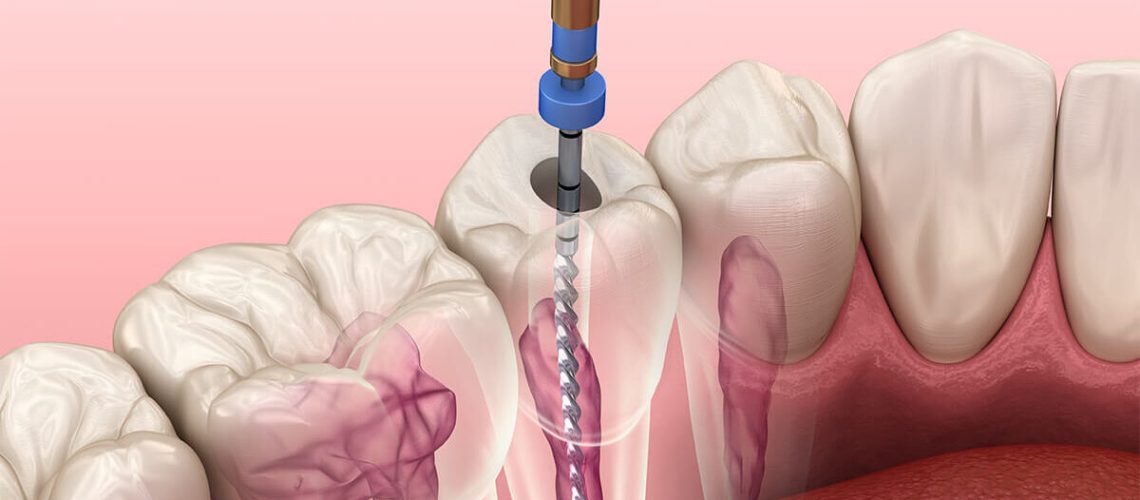When you hear the term “root canal,” it might bring to mind images of pain and discomfort. However, the reality is quite different. Root canal treatment is a common dental procedure designed to save a tooth that is badly infected or decayed. It can relieve pain and prevent the need for more extensive dental work. In this blog, we’ll break down what a root canal is, why it’s needed, and what to expect during and after the procedure.
What is a Root Canal?
A root canal is a dental procedure that treats infection or damage deep inside a tooth. To understand it better, let’s look at the structure of a tooth. Each tooth has three layers: the enamel (the hard outer layer), the dentin (the softer middle layer), and the pulp (the innermost layer). The pulp contains nerves, blood vessels, and connective tissue, and it plays a crucial role in the growth and development of the tooth.
When the pulp becomes infected or damaged—often due to deep decay, a cracked tooth, or trauma—it can cause severe pain and lead to an abscess (a pocket of pus). If left untreated, the infection can spread to other parts of the mouth and even into the bloodstream, causing serious health issues.
A root canal procedure removes the infected or damaged pulp, cleans and disinfects the inside of the tooth, and then fills and seals it to prevent further infection. The goal is to save the tooth and restore its function.
Why Would You Need a Root Canal?
Root canal treatment is typically necessary when the pulp inside a tooth becomes inflamed or infected. Several factors can lead to this, including:
- Deep Decay: Untreated cavities can penetrate through the enamel and dentin, reaching the pulp and causing infection.
- Cracked or Chipped Tooth: A crack or chip can expose the pulp, making it vulnerable to bacteria and infection.
- Repeated Dental Procedures: Multiple dental procedures on the same tooth can irritate the pulp, leading to inflammation.
- Trauma: An injury to the tooth, even if there’s no visible crack, can damage the pulp.
Symptoms that may indicate the need for a root canal include severe toothache, prolonged sensitivity to hot or cold, swelling or tenderness in the gums, and darkening of the tooth.
What Happens During a Root Canal?
The thought of a root canal can be intimidating, but understanding the process can help ease any anxiety. Here’s what typically happens during the procedure:
- Diagnosis and Preparation: Your dentist will first examine your tooth and take X-rays to determine the extent of the damage. If a root canal is needed, the area around the tooth will be numbed with local anesthesia to ensure you’re comfortable during the procedure.
- Removing the Infected Pulp: Once the area is numb, the dentist will create an opening in the tooth to access the pulp chamber. Using small instruments, they will carefully remove the infected or damaged pulp from inside the tooth and its root canals.
- Cleaning and Disinfecting: After the pulp is removed, the dentist will clean and disinfect the inside of the tooth to eliminate any remaining bacteria.
- Filling and Sealing: The cleaned root canals are then filled with a biocompatible material called gutta-percha, which helps seal the space and prevent re-infection. The tooth is then sealed with a temporary or permanent filling.
- Restoring the Tooth: In most cases, a tooth that has undergone a root canal will need to be restored with a crown to protect it and restore its function. This step may require a separate appointment.
What to Expect After a Root Canal
After the procedure, it’s normal to experience some mild discomfort or sensitivity, but this usually subsides within a few days. Over-the-counter pain relievers are typically sufficient to manage any post-treatment discomfort. It’s essential to follow your dentist’s instructions, which may include avoiding chewing on the treated tooth until it’s fully restored with a crown.
With proper care, a tooth that has had a root canal can last a lifetime. Regular brushing, flossing, and dental check-ups will help keep your teeth, including the treated one, healthy.
Conclusion
A root canal is a highly effective treatment that can save a severely damaged or infected tooth. While it might have a reputation for being painful, modern dentistry has made the procedure relatively quick and comfortable. If you’re experiencing symptoms that suggest you might need a root canal, don’t hesitate to consult your dentist. Taking care of the issue promptly can save your tooth and prevent further complications, helping you maintain a healthy smile.
